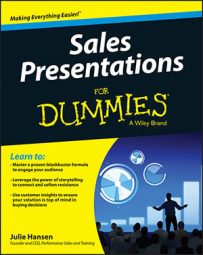The key to a great discovery meeting prior to your sales presentation is knowing what you want to find out and leaving room for your prospect to surprise you. For example, you may uncover additional challenges, competitive insights, or strategic goals that help you more closely align with your prospect's needs. Following are some key findings you want to look for when speaking with someone in your prospect's company:
Get everyone's point of view. Don't assume that everyone within your prospect's organization has the same understanding of the problem or agree on the solution. Ask each person her perspective on the problem and expectations of a solution. You want as full a picture as possible. If the answers are conflicting, circle back with your primary contact and ask for help to ensure that you understand the issues so that you can properly address the best interests of the company.
Understand the decision-making process. Figure out how the prospect makes decisions. Does the organization have a formal process? Do all decision makers have equal say or does one person's opinion have more weight? The more you know about the decision-making process, the more you can tailor your message. For example, if the CEO is the sole decision maker, you know to structure your presentation more around how your solution impacts the organization as a whole and less around the details of the process.
Define the personal impact. In addition to discovering how the current problem affects the organization, determine how it affects each prospect individually. The closer to home you can bring the problem and solution, the more powerful and memorable your presentation.

